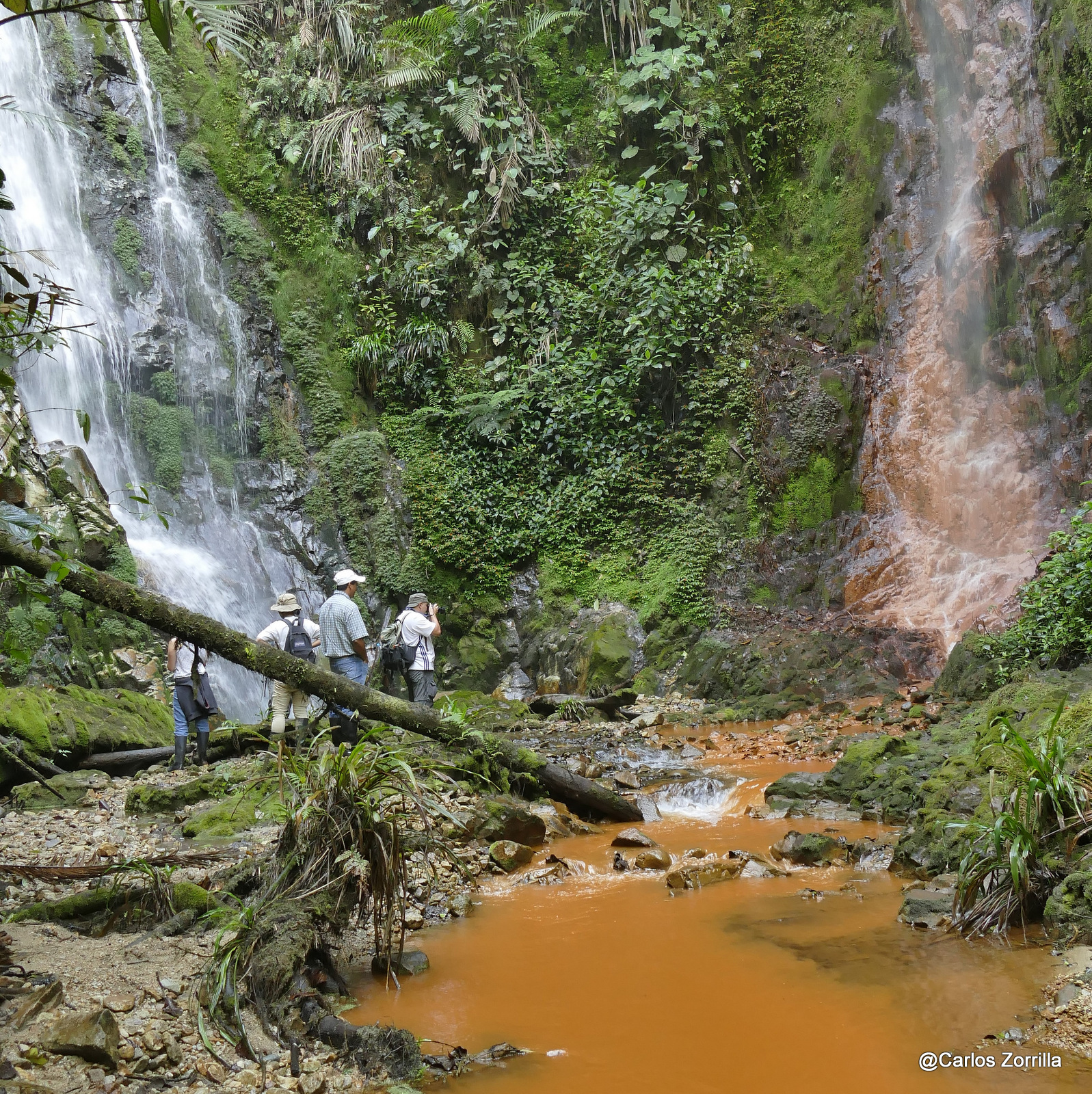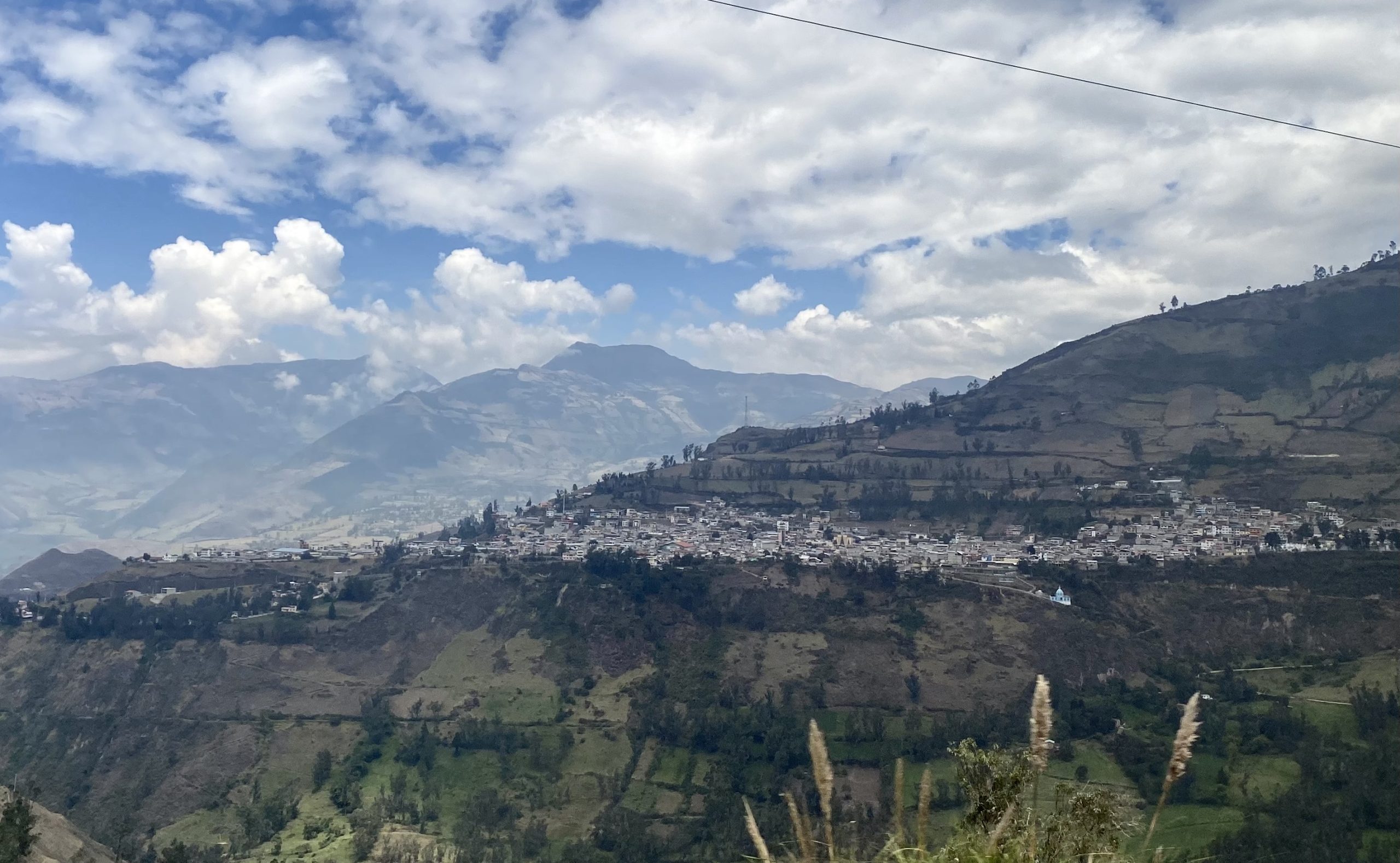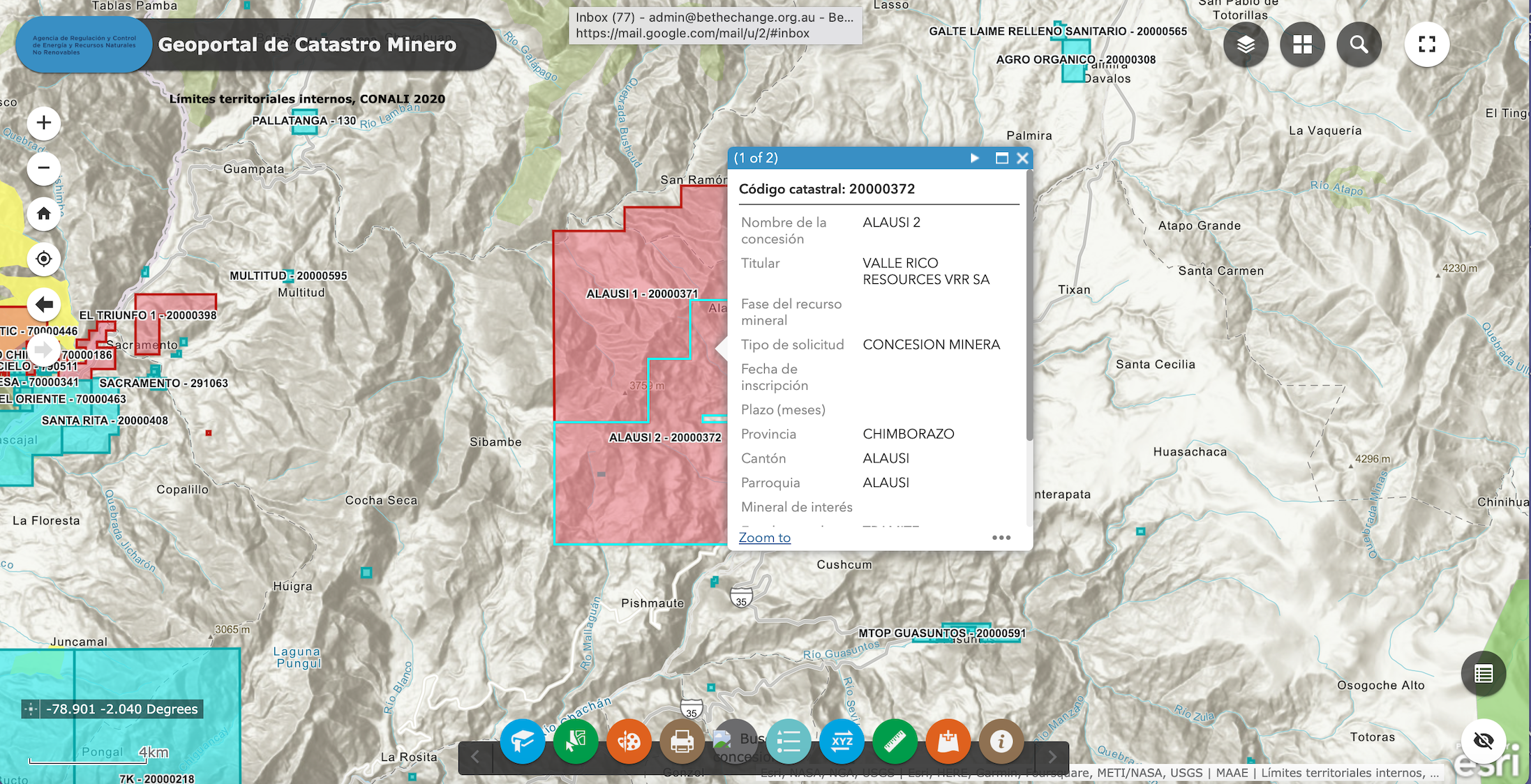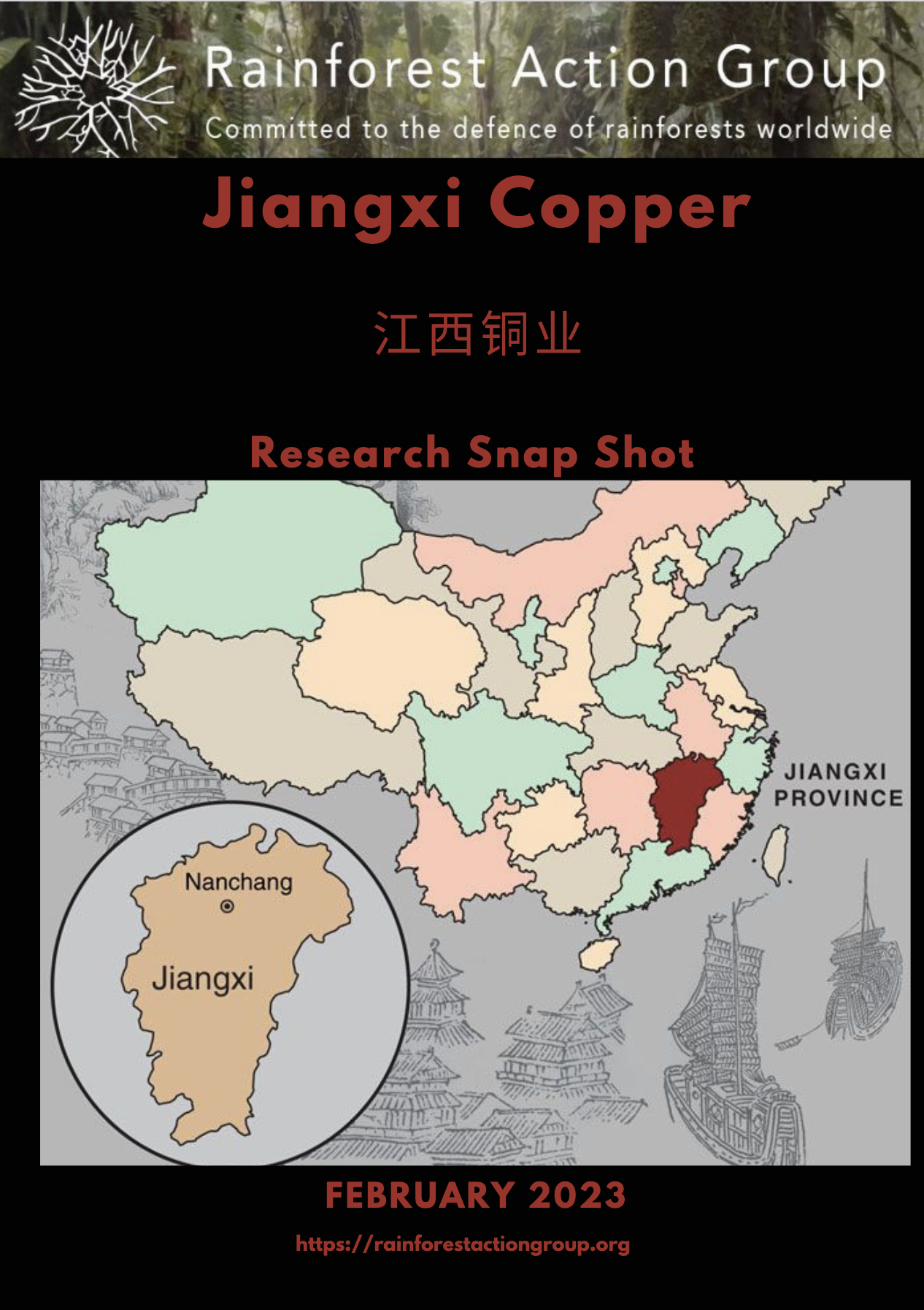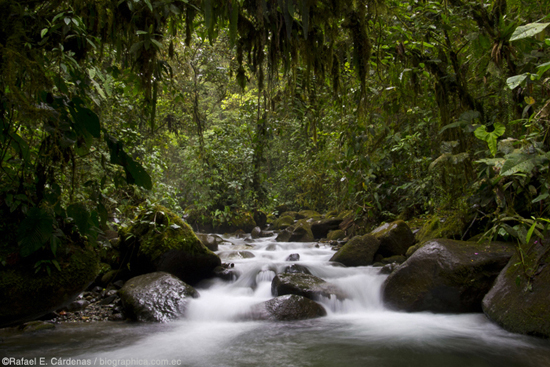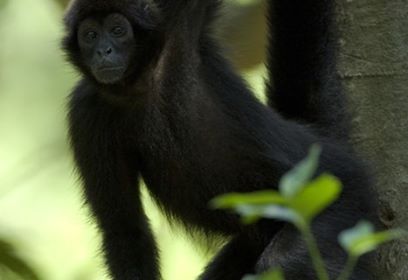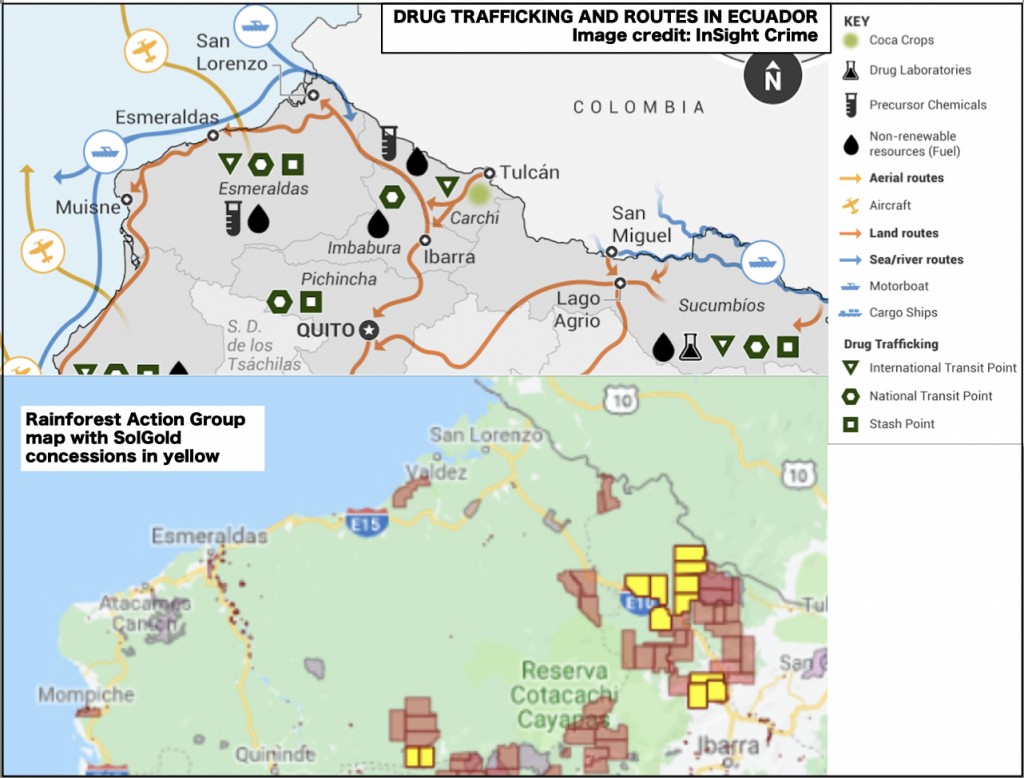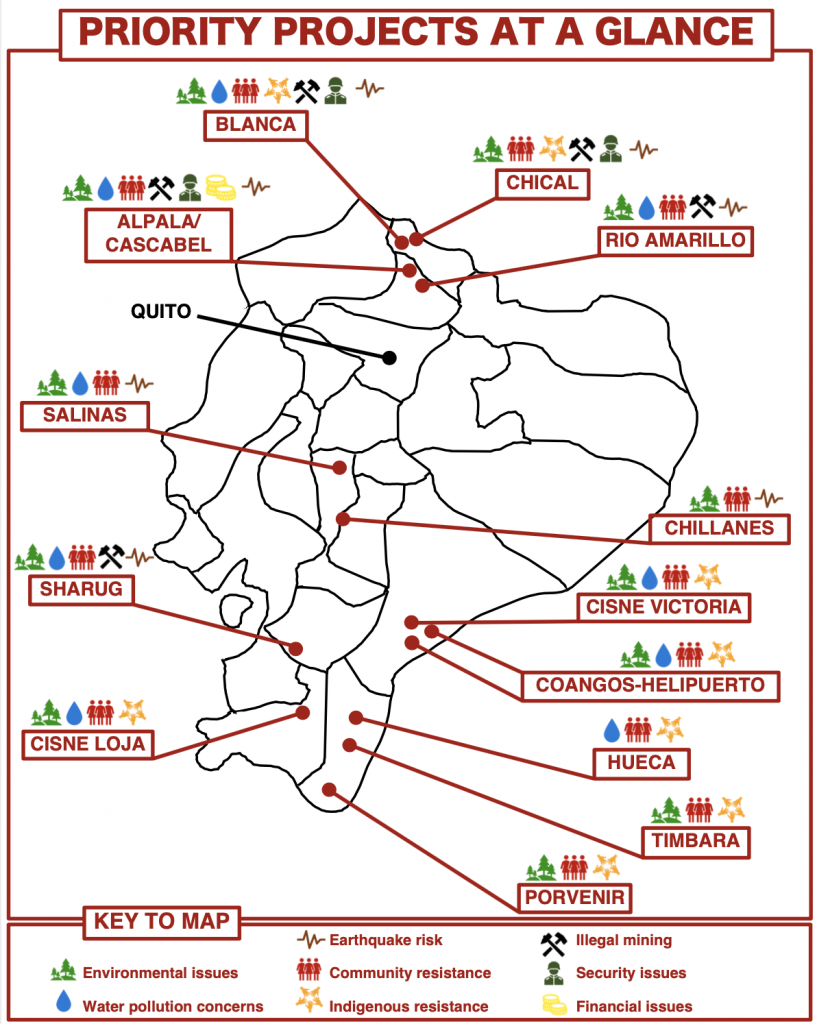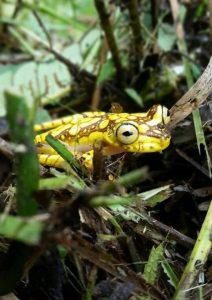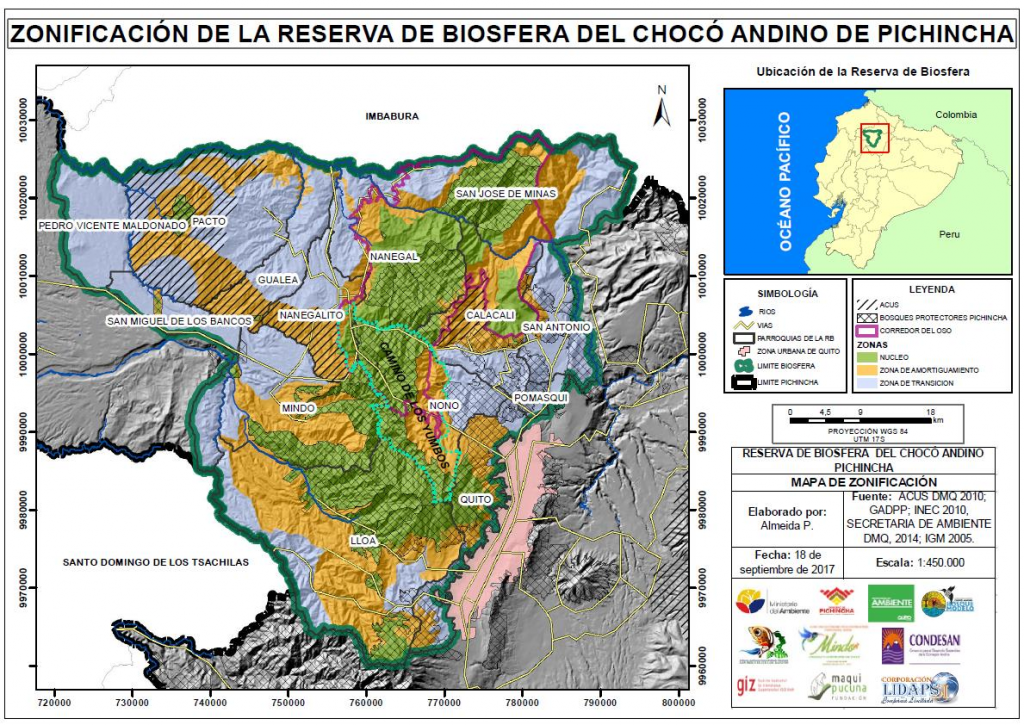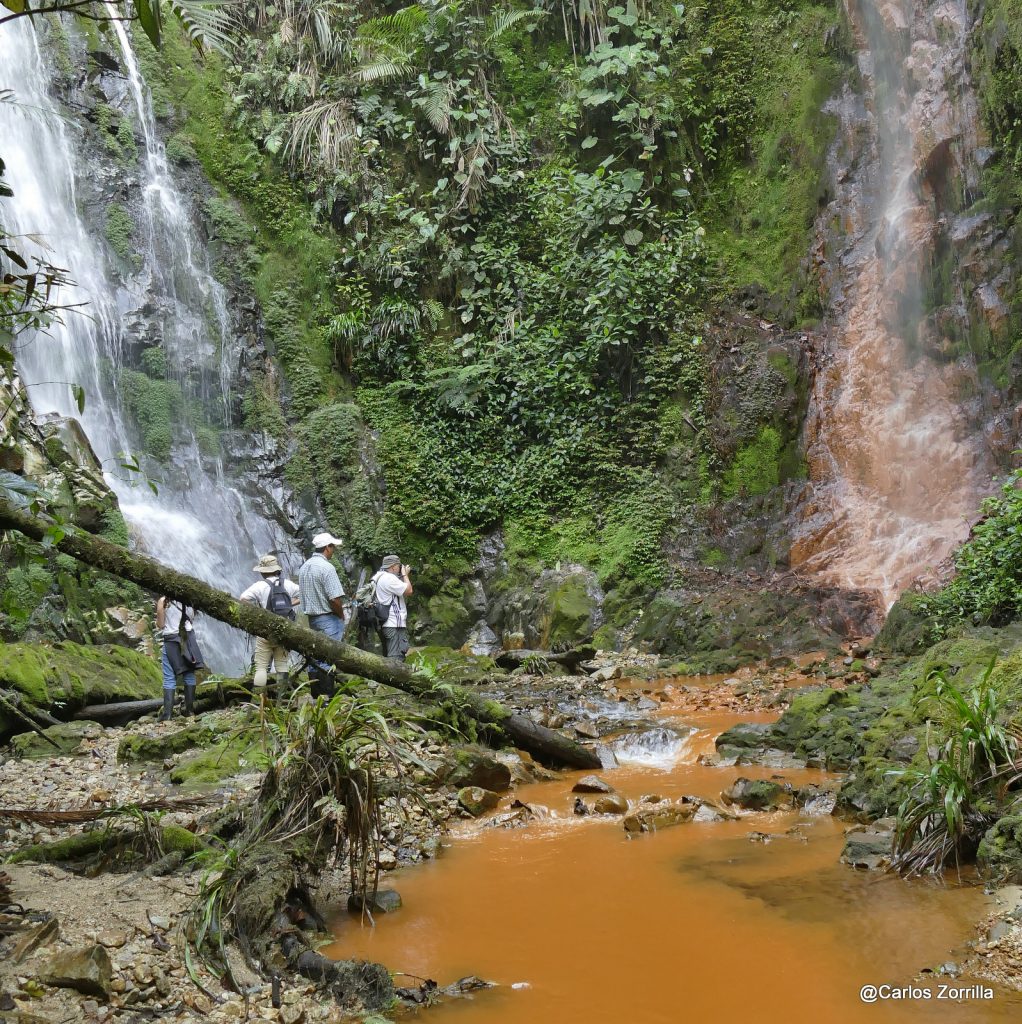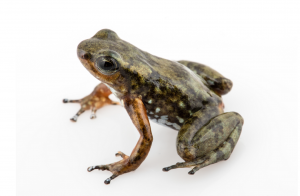New research shows vast impact of Solgold's proposed Cascabel mine in Ecuador
Yemanyá Corporation research shows Cascabel mine will cause more environmental impact than all other Latin American mines
Esmeraldas, July 16, 2025 The Yemanyá Corporation – Water and Conservation, in its commitment to the conservation of aquatic ecosystems and the sustainable use of resources in the province of Esmeraldas, presents the
following statement:
The 200 km long Cascabel mine's mineral pipeline would affect 18 parishes in northern Esmeraldas and threaten the protected mangrove area of the Esmeraldas River.
The Australian company SolGold proposes the construction of a 200 km mineral pipeline that will transport the extracted ore from the Cascabel mine to the port of Esmeraldas. This would be a pipeline similar to an oil pipeline, transporting minerals in the form of a slurry, obtained by mixing mineral powder from the mine with water in a 60% to 40% ratio, thus creating an enormous demand for water. This infrastructure would have a high risk of failures and ruptures, causing the slurry to spill outside the pipeline. This mineral concentrate contains copper and other heavy metals such as cadmium and lead, and would pose a threat to the environment and human health.
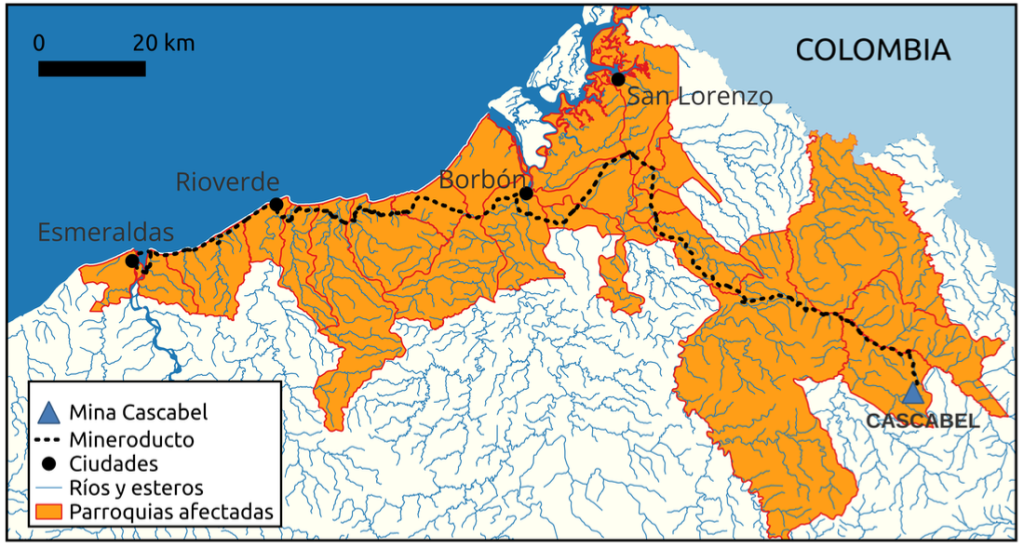
The mineral pipeline would follow the route of the old railway line between Ibarra and San Lorenzo, continuing parallel to the highway that connects San Lorenzo with Esmeraldas. The mineral pipeline would cross 22 parishes in the provinces of Imbabura, Carchi, and Esmeraldas and would require a permanent right-of-way between 20 and 60 m wide for maintenance work. Landowners and communities would have to sell or cede the land to SolGold for the construction of this infrastructure.
The mineral pipeline would cross over the Rioverde, Cayapas, and Santiago rivers, but also over smaller ones such as the Lagarto, Ostiones, Mate, Colope rivers, and other watercourses that join the Pacific Ocean following a North-South direction. From its starting point at the Cascabel mine until it approaches the road leading to Esmeraldas, it would also affect almost fifty small estuaries and the Cachaví, Bogotá, and Zaspi rivers. The pipeline's route would generate a high risk of contamination of the water resources and transitional and coastal waters throughout northern Esmeraldas. Due to the topography of the 30 km coastline between Rioverde and Esmeraldas, the mineral pipeline must be routed through or near populated areas and close to the sea. In this area, social conflicts would arise over land rights needed for infrastructure construction, and slurry spills would be very difficult to control before they contaminate coastal waters.
Finally, the mineral pipeline would have to cross the Esmeraldas River to reach the port. The mineral pipeline could cross the river by following the bridge and highway connecting Tachina to Esmeraldas, but it would have to traverse the Esmeraldas River Mangrove Wildlife Refuge all the way to the port to bypass residential areas. Alternatively, the mineral pipeline could cross the river at a point between Las Piedras and the Coronel Carlos Concha Torres airport runway and reach the port via an elevated viaduct, but this solution would have a significant visual impact at the mouth of the Esmeraldas River. Either option would pose a high risk of direct spills into the mangroves and transitional waters of the Esmeraldas River in the event of slurry leaks.
Esmeraldas, January 2, 2025 The Yemanyá Corporation – Water and Conservation, in its commitment to the conservation of aquatic ecosystems and the sustainable use of resources in the province of Esmeraldas, presents the
following statement:
The Cascabel mine will affect the ancestral territories of the Awa people and two protected mangrove areas in the Chocó region.
The Cascabel mine, Ecuador's largest mining project, is located in the Mira River basin in northern Ecuador. The mining company SolGold has signed a contract with the Ecuadorian government to operate Cascabel. The Cascabel concession will generate over 600 million tons of waste (tailings), which will primarily be discharged into two tailings ponds in the Santiago River basin. Additionally, two tailings ponds will be built in the Mira River basin for the initial phases of Cascabel's development. The tailings deposited in these ponds can produce acidic leachates and contain copper, heavy metals, and binding chemicals used in mineral processing. SolGold also proposes using cyanide to recover gold from these tailings.
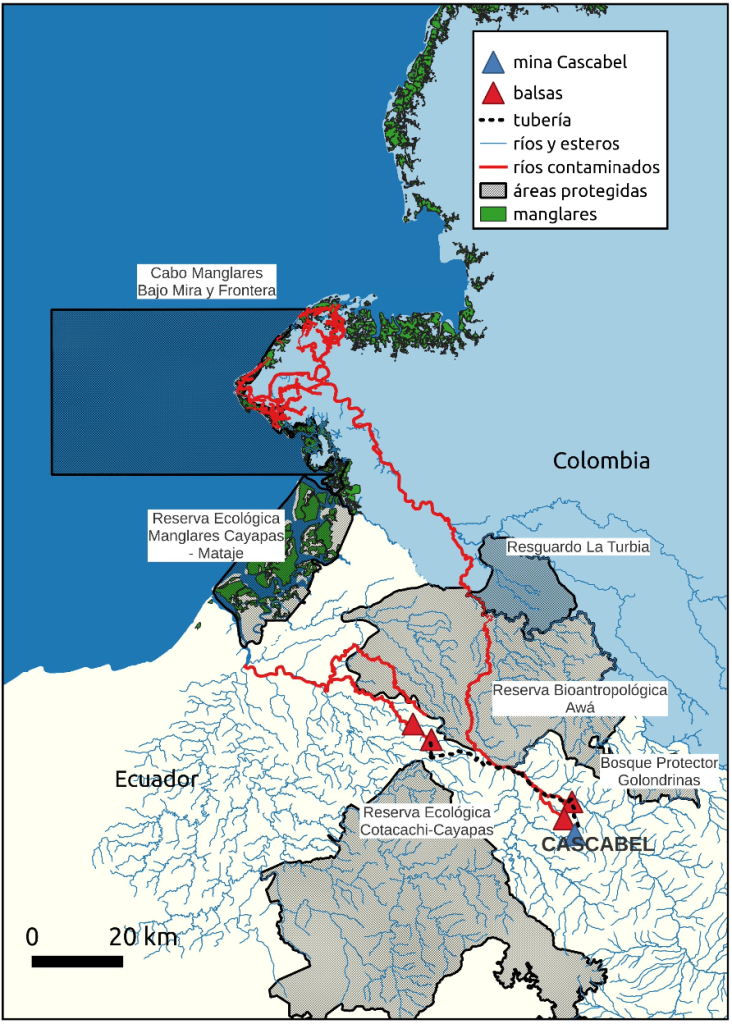
The tailings will drain contaminated water that will affect the Cachabí and Bogotá rivers, the entire lower Santiago River and its mouth, as well as the Cachaco and Parambas rivers, the Mira River, and all the channels that make up its mouth between Cabo Manglares and the city of Tumaco in an area of more than 400 km². In total, over 500 km of river channels (191 km in Ecuador and 413 km in Colombia) will be affected by Cascabel's tailings. The Santiago and Mira rivers have rich aquatic biodiversity, with over 62 freshwater fish species, five of which are endemic, and three are classified as vulnerable or threatened.
Cascabel's activities and tailings will impact ecological reserves and ancestral territories and communities in Ecuador and Colombia. They will affect the Awá Bioanthropological Reserve and the La Turbia Indigenous Reserve, which form part of the ancestral Awá territory on both sides of the border between Ecuador and Colombia with nearly 2000 km² protected. In total, 100 km of river channels within the two reserves will be affected: 23 km of the Bogotá River, 12 km of the Cachabí River at the reserve's border, and 64 km of the Mira River. It will also affect the Manglares Cayapas-Mataje Ecological Reserve at the mouth of the Santiago-Cayapas River, spanning 564 km², where 13 ancestral Black communities have custody agreements for the sustainable exploitation of mangrove resources, mainly shellfish and crab, which, along with fishing, are their main economic resources. At the mouth of the Mira River in Colombia, it will affect the Cabo Manglares, Bajo Mira y Frontera National Park, spanning 1902 km². This is an emblematic natural site because Cabo Manglares is the westernmost point of Colombia and an important nesting area for sea turtles. Even though these protected areas are far from Cascabel, they will be the ultimate recipients of the sediments transported by the rivers from the mine's tailings ponds, because mangroves retain large quantities of sediments. Mangroves act as nurseries for commercially important marine fish, are important carbon sinks, and harbor characteristic species that depend on the diverse aquatic food web. These ecosystem services will decrease or disappear when contaminated sediments from Cascabel begin to deposit in the mangroves.
The Cotacachi-Cayapas Ecological Reserve, at 2600 km², is the largest forest reserve in the Ecuadorian Chocó in the upper Santiago-Cayapas River basin. The northern boundary of this reserve is only 6 km from the Awá Bioanthropological Reserve. The development of infrastructure and two tailings ponds in the upper Cachabí River will act as a physical barrier to the movement of wildlife between both reserves. Iconic species like the jaguar and tapir will have reduced possibilities for dispersal and survival. This will lead to the isolation of the two large protected areas of the Chocó, accentuating the already existing fragmentation in Ecuador's protected area system,
which is already critical in the coastal region.
The Cascabel mine will generate the largest environmental impact from mining development in recent Latin American history, affecting the last protected areas of the Chocó coastal region in Esmeraldas (Ecuador) and Nariño (Colombia). The mangroves located between the mouths of the Santiago-Cayapas and Mira rivers will receive contaminated sediments discharged by the Cascabel mine's tailings ponds. More than 80 km of coastline and the associated marine-coastal region, which boasts great biodiversity and high ecological value, will disappear due to the operation of the Cascabel mine.
Esmeraldas, November 17, 2024. The Yemanyá Corporation – Water and Conservation, in its commitment to the conservation of aquatic ecosystems and the sustainable use of resources in the province of Esmeraldas, presents the
following statement:
The Mira River basin is a binational heritage shared between Colombia and Ecuador, but the Cascabel mine will only benefit Ecuador.
The Cascabel mine, Ecuador's largest mining project, is located in the Mira River basin, in northern Ecuador. The mining company SolGold has just signed a contract with the Ecuadorian government to exploit Cascabel and estimates a market value of 5.4 billion dollars for the minerals extracted during the mine's first 28 years of operation. The Cascabel concession will generate over 600 million tons of waste, which will primarily be discharged into the Santiago River basin, 40 km away from the mining concession. Additionally, two tailings ponds will be built in the Mira River basin, on the Cachaco and Parambas rivers, both with a capacity to store 60 million tons of tailings that will be used in the initial phases of Cascabel's development. The tailings can produce acidic leachates and contain copper, heavy metals, and binding chemicals used in mineral processing.
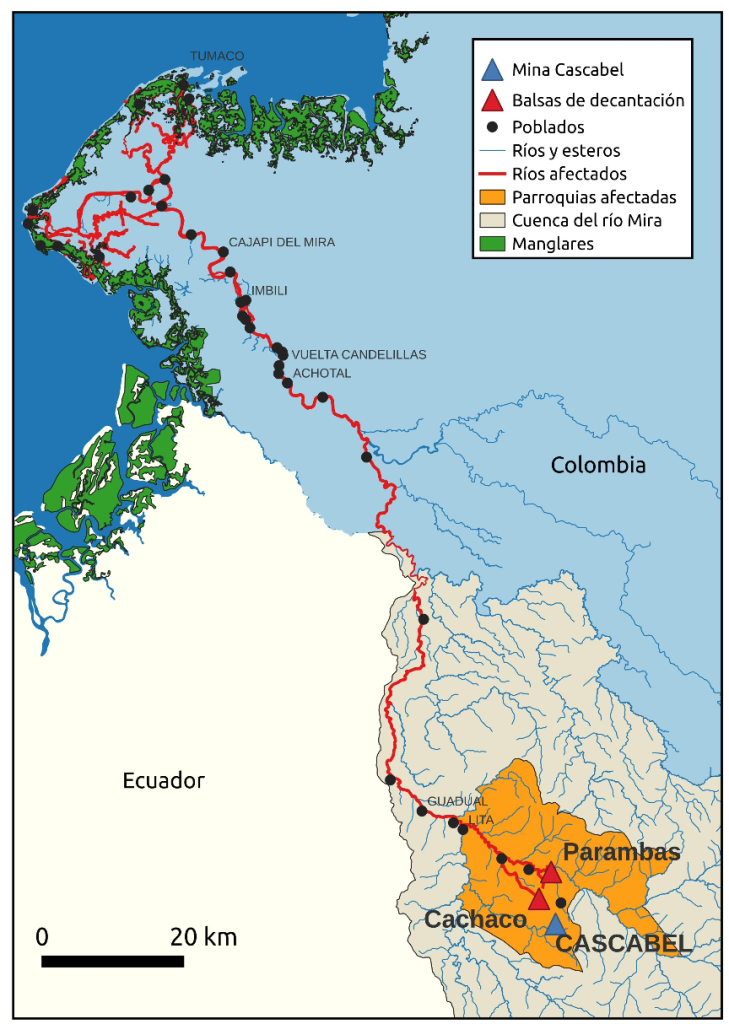
SolGold has also tested the use of cyanide to recover gold from the tailings. These tailings ponds will drain contaminated water into the Cachaco and Parambas rivers, tributaries of the Mira River. Affected areas include the parishes of Lita and Jacinto Jijón y Caamaño near the ponds, Guadual, and the Mira River downstream from its confluence with the Parambas River. The discharges will also affect Achotal, Vuelta Candelillas, Imbili, Cajapí del Mira, and the entire course of the Mira River in Colombia. Finally, they will disperse at the mouth of the Mira River, affecting Milagros and the Cabo Manglares, Bajo Mira y Frontera National Park. The mouth of the Mira River is characterized by a complex network of smaller channels, and the discharges will spread over an area of 400 km², reaching the city of Tumaco. Mine tailings leachates contaminate surface and groundwater, preventing their use for domestic supply and bathing in the river. Heavy metals enter food webs and, through bioaccumulation, concentrate in fish and crustaceans like shrimp and minchilla. Communities located downstream from the tailings ponds will suffer severe environmental damage and health risks from consuming contaminated water and fish. Furthermore, the Mira River basin contains a rich aquatic biodiversity with 33 native freshwater fish species, with two species classified as vulnerable and three as threatened or near-threatened.
The northern border between Ecuador and Colombia is merely an administrative boundary, as there's great cultural similarity on both sides. This is a conflictive border with five recognized armed groups operating in the territory that have the capacity to infiltrate Ecuador, as demonstrated by the attack on the San Lorenzo police barracks and the murder of three journalists by the Oliver Sinisterra Front group in 2018, or the presence of FARC dissident guerrillas 300 km from the border. Additionally, 50% of the cocaine produced in Colombia is transported to Ecuador for trafficking to the United States, Europe, and various Pacific countries. Besides insecurity and violence, similar problems have been identified in both countries, such as extreme poverty, lack of basic services, deficient infrastructure, and environmental deterioration. The need for joint actions for the development of these border regions was recognized as early as the 1940s. In 1990, the Border Integration Zone was established between Colombia and Ecuador, primarily to regulate vehicle circulation. Subsequently, the Andean Community established Border Integration Zones as a tool for transnational development and integration in 2001. In 2014, the Ecuador-Colombia Binational Border Integration Plan was presented, based on social and economic development, sustainability, biodiversity conservation, and pacification.
The Cascabel mine will keep its economic benefits in Ecuador but will leave only contaminated water and sediments in Colombia. The Cascabel mine itself, located 20 km from the border, and the necessary infrastructure for its operation could become future targets for armed groups if they come into conflict with the Ecuadorian government. Aside from the negative environmental and social impacts caused by Cascabel's tailings, this project will not contribute to the social and economic development needed for peacebuilding in the area on both sides of the border. On the contrary, Cascabel will be a source of greater economic inequality and conflict throughout its operational life of over 100 years, destroying three decades of work towards cross-border integration.
Esmeraldas, October 15, 2024. The Yemanyá Corporation – Water and Conservation, in its commitment to the conservation of aquatic ecosystems and the sustainable use of resources in the province of Esmeraldas, presents the
following statement:
The Cascabel mine will discharge over 600 million tons of waste into the Santiago River basin during its first 28 years of operation.
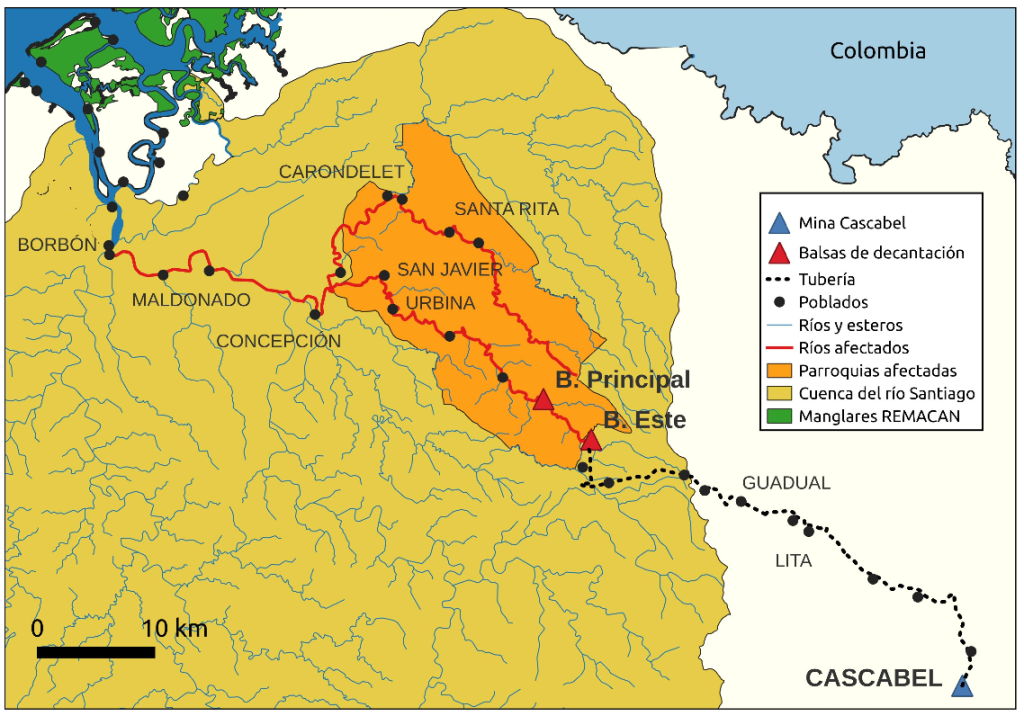
The Cascabel mine is one of Ecuador's new large-scale mining projects. It's a metal deposit with high copper, gold, and silver content, located near Ibarra, in the municipalities of Lita and La Carolina, northern Ecuador, about 20 km from the Colombian border. The mining company SolGold recently signed a contract with the Ecuadorian government to operate Cascabel. They estimate that the Alpala deposit holds 10.7 million tons of copper, 760 tons of gold, and 2,600 tons of silver, which will be extracted during the mine's first 28 years of operation, with an estimated market value of 5.4 billion dollars. The Cascabel concession will generate over 600 million tons of waste during the mine's construction and operation. To accumulate these mining tailings, two tailings ponds have been planned in the upper Cachabí River basin, 4 and 7 km from San José de Cachabí.
These ponds will have the capacity to store over 2 billion tons of tailings. Although these ponds are located 40 km from the mining operation, they are easily accessible via the old railroad that connects Ibarra and San Lorenzo, which will be used to transport tailings from the mine via a 57 km pipeline. These tailings can produce acid leachate due to the presence of pyrites, and contain copper and other heavy metals like arsenic, cadmium, or lead, as well as binding chemicals used in the ore concentration process. Furthermore, SolGold has tested the use of cyanide to recover gold from the tailings and should clarify if it will ultimately be used at Cascabel. The tailings ponds will pump 1500 cubic meters of contaminated water per hour into the Cachabí River and will have a secondary drainage into the Bogotá River. The Chachi and Afro-descendant communities located downstream from the tailings ponds will suffer severe environmental damage and health risks, disrupting their economic and cultural connection to the river.
Affected areas include the parishes of Urbina, San Javier de Cachabí, Santa Rita, and Carondelet, as well as the entire lower Santiago River, Concepción, Maldonado, and Borbón. The mangroves of the Cayapas-Mataje Ecological Reserve will be the final recipients of these discharges. In the affected areas, it will be impossible to use surface and groundwater for domestic supply, and the recreational and daily use of the river itself will disappear, eliminating traditional economic activities such as fishing, shellfish gathering, and crab catching. Furthermore, the Santiago and Cayapas river basins contain a rich aquatic biodiversity with 62 freshwater fish species, five of which are endemic, and three are classified as vulnerable or threatened. After years of demanding control over illegal mining and the remediation of environmental damage, even with a still-valid court order to halt mining in the area, the government's response has been to hand these communities the drain from the world's third-largest copper mine.
The government assures that Cascabel is an example of sustainability, and SolGold presents itself on its website as a company committed to minimizing the social and environmental impacts of its operations. Although the government estimates an income of 1611 million dollars from mining royalties, of which 60% would be delivered to the affected municipalities, only the parishes of Lita and La Carolina, located within the Cascabel concession, will receive these mining royalties.
Although a strict environmental monitoring plan has been established, controls are only carried out in the Mira River and several streams that drain the concession area. This is a clear attempt to hide the true negative social and environmental impacts of Cascabel's tailings, which will be primarily located in the Santiago River basin.




